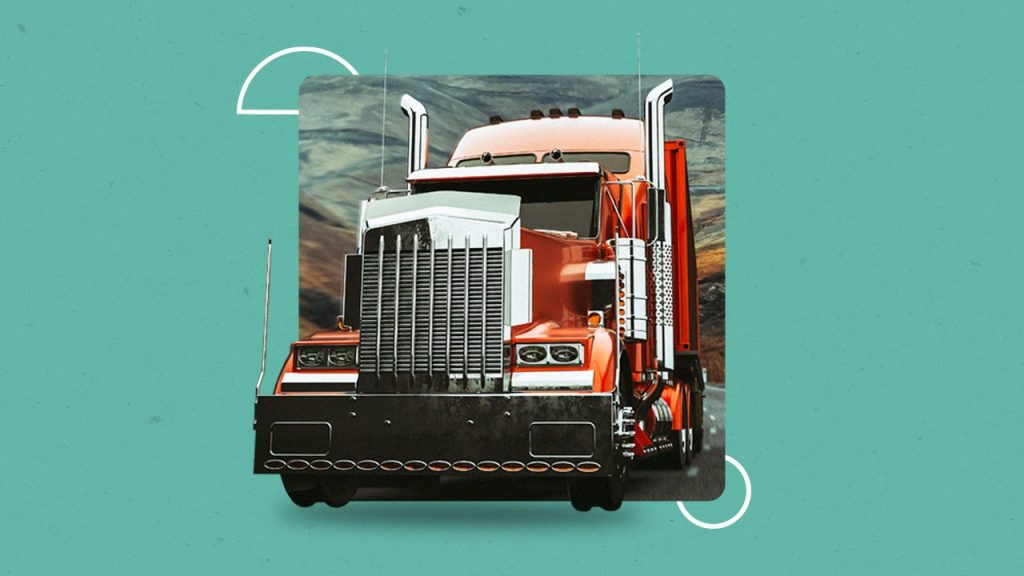Key takeaways
- It is important to read and understand a semi-truck loan agreement before signing
- Properly managing semi-truck financing involves staying on top of business finances, budgeting and paying your semi truck loan repayment on time
- If you fall behind on payments, communicate with your lender to see if it can defer payments to avoid defaulting on the loan
Obtaining a semi-truck loan jumpstarts your financing journey. But managing the loan effectively determines whether you will repay the loan and achieve success in your owner-operator business. Ultimately, managing your semi-truck financing takes proactive planning, including keeping accurate revenue forecasts and not taking on more debt than you can handle. It also means communicating with your lender if you run into difficulties with repaying the loan.
Let’s look at a variety of ways to manage your semi-truck loan and your options if you can’t make one or more repayments.
Strategies for managing a semi-truck loan
Try these strategies to keep your trucking business finances in good standing and to ensure follow-through with loan repayments for the entire term.
1. Read your loan agreement
Before getting a semi-truck business loan, you should understand all the terms in your loan agreement so you’re not surprised by any fees or conditions. Ask your lender questions if you don’t understand the conditions set forth.
Here are some common loan agreement terms.
Terms to know
- Acceleration
- Acceleration is the lender’s ability to make the entire outstanding principal and interest due immediately if you default on the loan.
- Amortization
- The amortization schedule shows how repayments are structured throughout the loan. This schedule requires you to pay more in interest at the beginning of the loan, but over time, you will pay more toward the principal. However, monthly loan repayments will stay the same.
- Annual percentage rate (APR)
- APR is a percentage that reflects the yearly cost of the loan, including some fees like the origination fee. It’s the most accurate description of a loan’s cost.
- Collateral
- Collateral is the assets used to back the loan, proving that you can repay part or all of the loan. If you default, the lender seizes the collateral and sells it to pay off the debt.
- Default
- Default is the condition of violating your loan agreement by not making repayments. Lenders differ at what point they consider your loan in default, so read this section in detail to understand the exact process if you miss repayments.
- Loan amount
- The loan amount is the total amount that you’re borrowing to cover the semi truck cost.
- Penalty fees
- Lenders can charge penalty fees for any event that they deem a violation of your loan agreement. For example, they may charge a late payment.
- Personal guarantee
- A guarantee that the borrower will be held personally responsible for repaying the loan. The lender can seize personal assets to satisfy the loan if you default. Many semi-truck loans require a personal guarantee.
- Prepayment penalty
- Some lenders require a prepayment penalty fee if you pay off the loan ahead of time. This fee helps lenders recoup some of the interest that they would have made if they had serviced your loan for the entire term.
- Repayment term
- The repayment term is the length of time that you’ll be required to make repayments, such as 48 or 60 months. You may have some flexibility in choosing the repayment term, but high-risk borrowers may only be able to get short terms.
2. Keep tabs on your budget
Your business budget is essentially an overview of your business’s cash flow, including all revenue and expenses. Updating and tracking your budget regularly is crucial for managing semi-truck financing because it allows you to see how loan repayments fit into your budget. Your budget should reflect:
- Current revenue
- Forecasted revenue, which involves projecting what you expect to make
- Profit margins, which are your revenue minus expenses
- One-time expenses, such as vehicle repairs or buying new equipment
- Fixed expenses that stay the same with each payment
- Variable expenses that fluctuate based on the season or amount of usage
Not only should you create a detailed budget for your business, but you should also update revenue forecasts regularly. Startups and single-member businesses may get away with updating the budget monthly. But growing small businesses might need to revise projections daily or weekly. Doing so helps the business manage cash flow and predict gaps you can bridge with additional funding.
3. Pay your bills on time
Making on-time payments for semi-truck financing helps build or maintain good credit and avoids costly fees. You can set up automatic payments from your business checking account to ensure you don’t miss a due date.
If you miss payments, you can expect the lender to report the event to the credit bureaus, which are Dun & Bradstreet, Equifax and Experian for business credit. Your personal credit may also take a hit if you signed a personal guarantee for the loan. Your lender will also charge a late fee that you must pay to bring your account back to good standing.
4. Keep debt to a minimum
Having too much debt can make it harder to manage business finances because it keeps your expenses high and dips into profitability. Multiple loans increase the risk that you’ll default on one or more of your debt obligations if your revenue decreases unexpectedly.
If you have an emergency and need additional cash, you can calculate your debt service coverage ratio to give an idea of how you could handle new debt. The DCSR measures how much revenue you have to cover all your debt obligations. Lenders like to see a DCSR of 1.25 or greater. On top of using the DSCR, be sure to calculate the expected monthly payments and see if the repayment fits into your budget.
On the positive side, you can also keep debt to a minimum by making additional repayments when sales are higher than expected. You could end up paying off your loan early, saving on interest and increasing your working capital.
5. Save for a business emergency fund
You should also consider the seasonality of your trucking business contracts and build a reserve of funds for paying bills during slow seasons. As a rule of thumb, you may want to save up three to six months of expenses for healthy business savings.
This reserve will help your business weather the ups and downs of the market and keep your business going even when revenue dips temporarily. Having money set aside in an interest-earning account may help you avoid taking on more debt if you encounter an unexpected expense, such as semi-truck repairs.
6. Perform scheduled preventative maintenance
As an owner-operator, you’re responsible for performing regular preventative maintenance on your semi truck. You want to keep it in roadworthy condition so that you don’t lose work due to repairs and to preserve the value of this business asset.
There are several levels of maintenance checks that you’ll need to schedule, including:
- Dry preventative maintenance. Also known as PM-A, this type of maintenance includes refilling fluids and tire pressure and inspecting major components of the truck like tires, suspension and brakes.
- Wet preventive maintenance. This type of maintenance includes everything from dry preventative maintenance and includes an oil and filter change.
- DOT inspections. Every commercial vehicle needs an annual Department of Transportation inspection, which involves an in-depth inspection of the truck’s components. DOT inspections check brakes, the fuel system, lights, reflectors, steering, suspension, tires and rims, turn signals and more.
6. Build your credit
Even though you’ve already obtained semi-truck financing, continue building your business credit in case you need a future loan. You can build business credit by paying your semi-truck loan on time, using a line of credit or business credit card and establishing trade credit with vendors you use.
Factors considered in your business credit score include:
- Credit usage
- New credit
- Payment history
- Size of business
- Time in business
- Types of credit
What happens if you don’t pay a semi-truck loan?
If you fail to make payments on your loan, you violate the terms of your loan agreement. This will have a negative impact on your business credit and possibly your ability to get loans in the future. The good news is that you’re not without options if you’re experiencing hardship.
1. Loan goes into delinquency
If you miss a single repayment on your semi-truck loan, your loan will become delinquent. The lender will notify you of your missed payment and charge a late fee.
At this point, your lender won’t pursue you to make up the missed amount until you’ve missed a significant number of repayments, such as three to six months’ worth. But your credit score will take a hit. You can easily return your loan to good standing by making the missed repayment and late fee.
2. You can choose debt relief
If you know you can’t make the missed repayment in the foreseeable future, you should contact your lender to let them know your situation. Don’t avoid calls from your lender or debt collectors. Many lenders are willing to work out a debt relief plan to keep the loan in good standing.
Debt relief may include:
| Option | How it works |
|---|---|
| Deferred payments | Your lender lets you pause repayments for one or more months to get back on your feet. The lender either adds additional repayments to the end of your loan or requires you to make up missed repayments once you start making repayments again. |
| Modified loan terms | Your lender modifies your loan to extend repayment terms and lower your monthly repayment. |
| Refinancing | Your lender may be willing to refinance the semi-truck loan, which can lower repayments and extend how long you have to repay the loan. |
| Settlement | You work with your lender to pay off the debt at a lower amount than your loan’s current outstanding balance. Your credit will be significantly impacted. |
3. Loan declared in default and goes into collection
Once you’ve missed multiple repayments, your lender will declare your business loan in default and try to collect the outstanding balance. Because you’ve violated the terms of your agreement, the entire loan amount will become due. The lender will probably seize your truck to recoup the loan since most semi-truck loans use the truck as collateral.
The lender can also go after your other business assets, which can lead to ending your business if you have to use all your assets to satisfy the lender. The lender can also seize personal assets if you provided a personal guarantee for the loan. A personal guarantee means that you agree to be held personally responsible for repaying the loan.
You can avoid default by contacting your lender and explaining your situation. The lender may be willing to work with you so that you can successfully repay the loan.
Bottom line
Managing your semi-truck loan effectively involves preparing for the future and taking a proactive approach to tracking business finances and credit. The best-case scenario is that you make all loan repayments on time or early and build a solid business credit history that can be an advantage to you later.
But if difficulties arise, you’ll need to make decisions to help you manage your business loan, such as using cash reserves, cutting expenses or contacting your lender about financial hardship.
Frequently asked questions
-
You can take a tax deduction on the interest for your equipment loan as long as you’re considered an owner-operator truck driver. You’ll need to calculate the actual expenses for your truck since the standard mileage deduction doesn’t apply to semi-truck drivers.
-
Most banks require a personal credit score of 670 or higher for an equipment loan. But online lenders will work with individuals who have a score in the low 600s or under. A few lenders specialize in lending to the trucking industry and are willing to work with bad credit borrowers.
-
If you default on an equipment loan, your lender will seize the commercial equipment to pay off the loan. This happens because the loan is secured with the equipment as collateral. In many cases, you will have provided a personal guarantee to the loan, which allows the lender to pursue your personal assets for repayment.
Read the full article here









